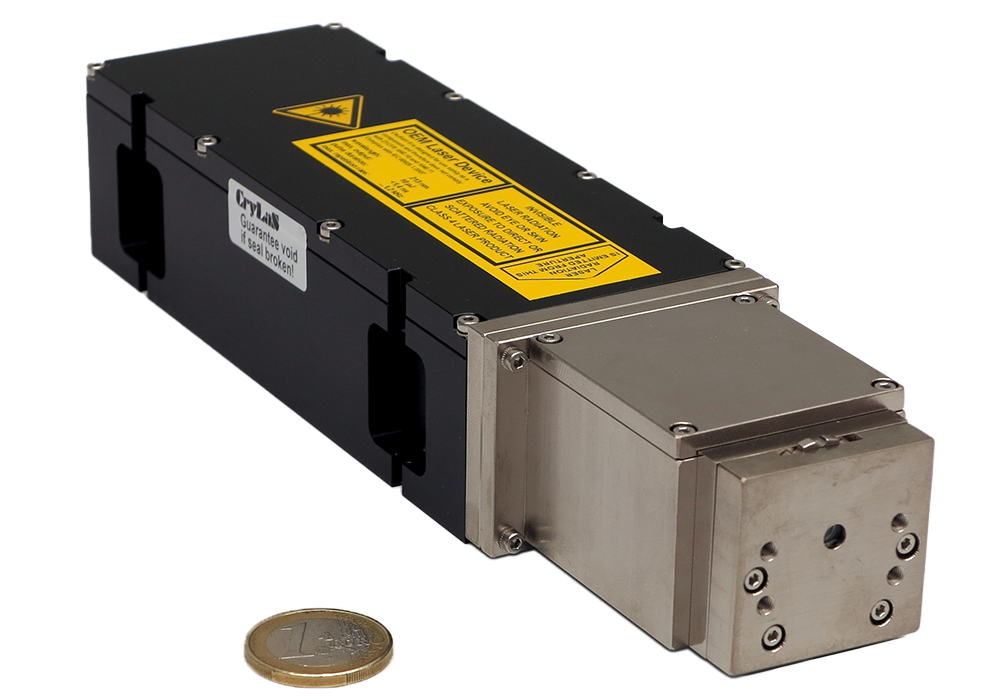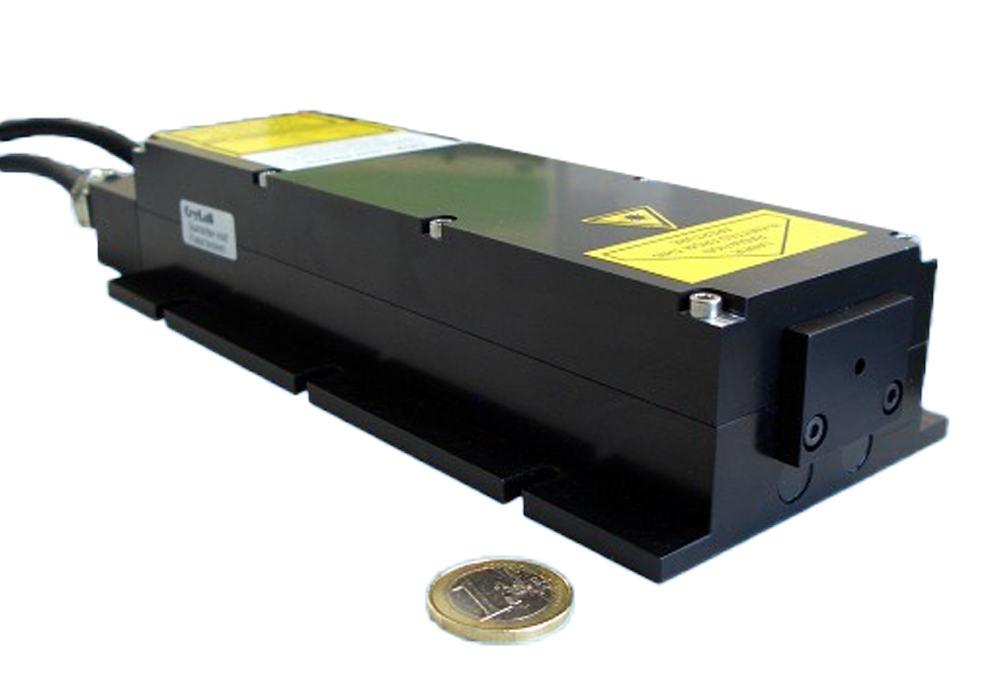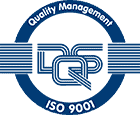Technical data:
| Wavelength | 213 nm |
| Pulse energy | > 1.5 μJ @1kHz |
| Peak power | > 1.5 kW @1kHz |
| Pulse repetition rate | ≤ 2.5 kHz |
| Pulse width (FWHM) | ≤ 1.0 ns |
| Polarisation orientation and purity | > 100:1 horizontal |
| Pulse energy drift over 6h | < ± 5 % |
| Pulse-to-pulse energy stability | < 2 % @1kHz |
| Laser class | 4 / IV |
| Spatial mode | TEM00 (ellipticity> 0.3) |
| Beam divergence 2Θ | < 2.5 mrad |
| Beam diameter | 450 ± 200 μm |
| Power consumption mean (max) | 20 W (max.70 W) |
| Operating voltage | 12 V DC |
| Line voltage | 90 – 240 V AC (50 – 60 Hz) |
| Marking | CE |
- RS 232, USB
- External Trigger (TTL, rising edge) single shot (pulse on demand) – max. repetition rate
- Interface for TTL-control and power monitor
| Warm-up time | < 5 min |
| Operating temperature | 18 – 38 °C |
- Stand-alone system (incl. key-switch, heat-sink and manual shutter; CDRH compliant)
- Synchronization signal output (rise time <2 ns)
- Manual shutter or electrical beam blocker
- External beam expander (e.g. 3x) on request
Compact deep UV pulse laser for industry and science
The FQSS213-Q laser series, like all CryLaS pulse lasers with microchip as resonator, belongs to the family of diode-pumped solid-state lasers (DPSS lasers) with passive Q-switching. The laser’s compact housing and relatively high pulse energy make it an optimal light source for applications that require minimal housing dimensions. Especially for these, which require particularly high energies and short pulse durations (about one nanosecond) in combination with a compact design.
A diode-pumped microchip, consisting of a resonator (Nd:YAG crystal) and a saturable absorber (Cr:YAG crystal) bonded to it, is used to generate laser beams. Based on the generated 1064 nm fundamental, NLO optics (non-linear optics) are used to generate frequency multiples of these same fundamental and, in some cases, to combine them. This allows us to generate a wide range of laser wavelengths. In order to maintain the best possible particle-free environment to prevent effects such as solarization, the conversion crystals are encapsulated in an air-sealed capsule.
Due to the wavelength of 213 nm, the laser carries a very high photon energy. For example, this is suitable for mass spectroscopy of aerosols in the case of this laser series. Moreover, larger band gaps can be bridged by absorption due to the approximately 5.8 eV of the photons. For example, this is suitable for time-resolved fluorescence or photoluminescence applications on semiconductors. 213 nm wavelength is also ideal for ionization of (biological) material and engraving / marking of glass or other transparent material.
Our passively Q-switched and pulsed microchip-based laser systems are polyvalent and are used in industrial (OEM) and scientific research. We are able to generate 5 wavelengths from DUV to IR for our pulsed lasers:
- 213 nm
- 266 nm
- 355 nm
- 532 nm
- 1064 nm
The pulsed lasers are classified into three product categories and are recognized as reliable and field-proven laser sources for a wide range of applications. These product series are based on three different concepts, each bringing different pulse repetition rates, pulse durations and energy levels.
Plug-and-play: CryLaS lasers feature easy installation in your experimental setup or laboratory instrument. Our expert team of specialists will advise you from the origin of the idea for an application, through to the completion of your laser technology-based product. Our microchip lasers are application-proven and reliable due to their high quality, low service requirements and low operating costs.
The most important aspects at a glance:
- 2,5 kHz max. repetition rate
- Compact housing and controller
- Output energy 50 nJ to ca. 2.5 µJ
- Average output power in the range of 0.75 mW to 2.5 mW






